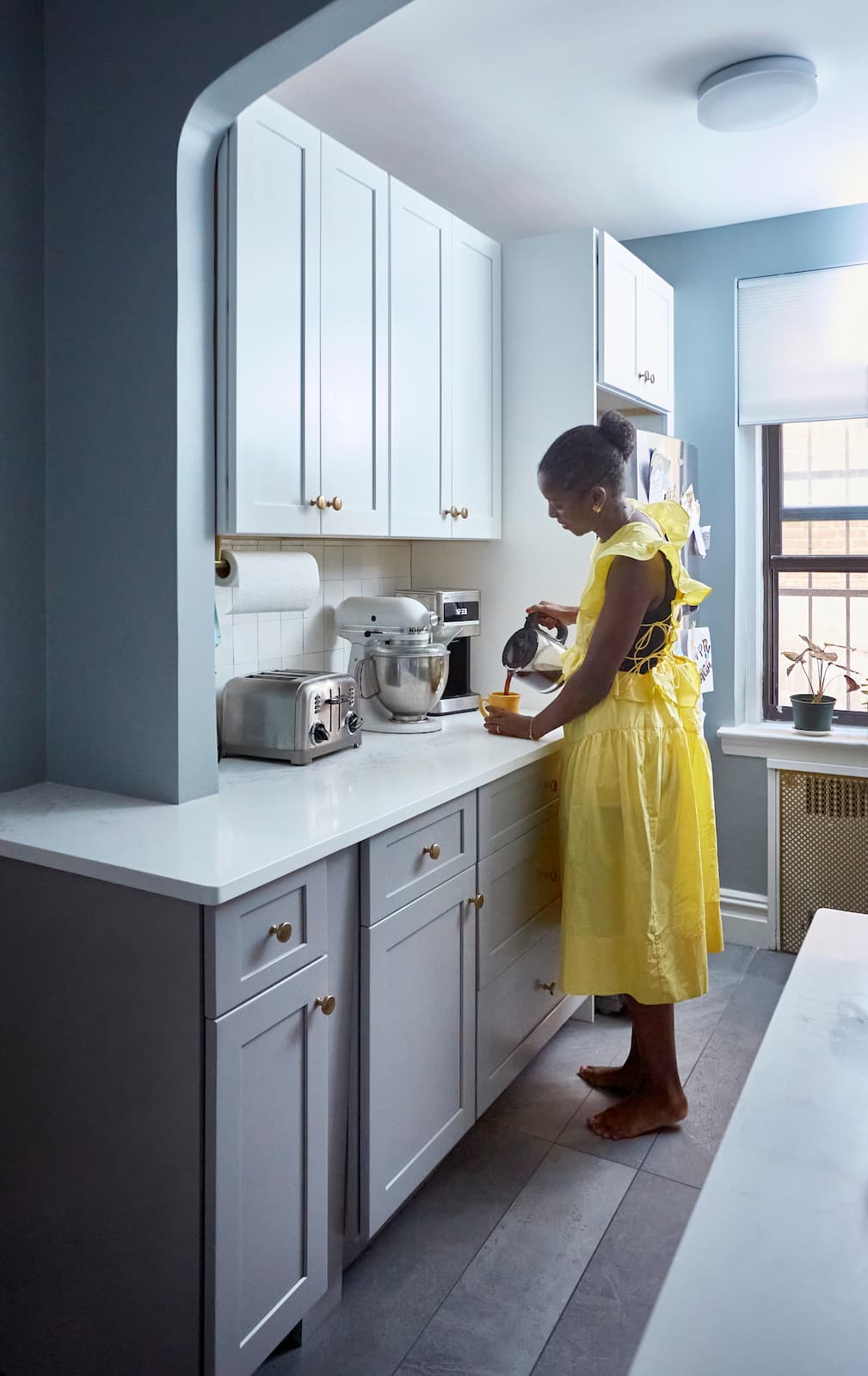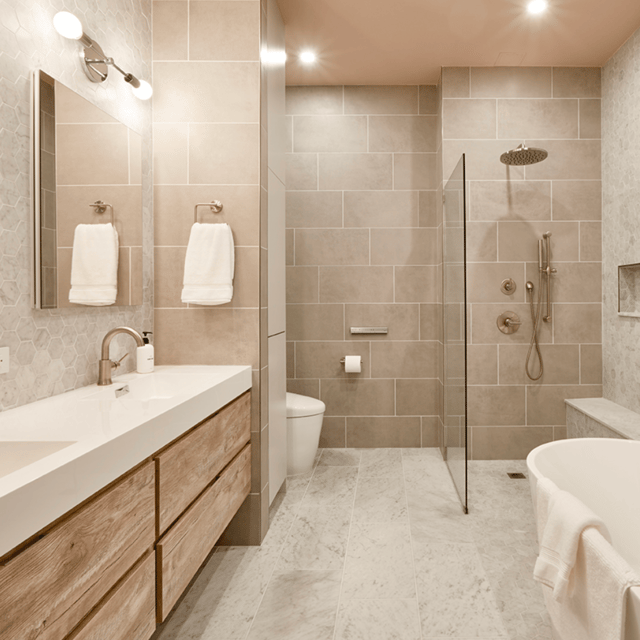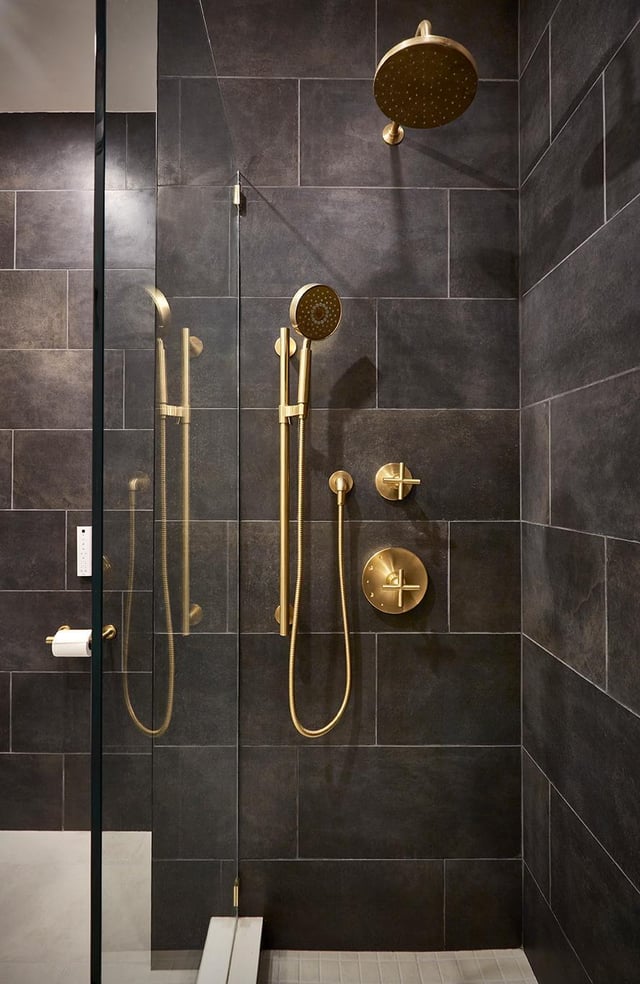
Bathroom
Eco-Friendly Shower & Bathroom Ideas
12.23.2025
Our New Year savings event is here: Get up to $6,500 off your project today (terms apply).


In This Article
When it comes to bathroom renovations, many homeowners are tempted to splurge on the visible upgrades—luxury tiles, high-end fixtures, and stylish vanities—while cutting corners on the less noticeable but essential step of waterproofing. However, neglecting proper waterproofing can lead to costly problems down the road, including mold, rot, and structural damage. Because bathrooms are constantly exposed to moisture, investing in the right waterproofing materials and techniques is crucial for protecting your home and ensuring your renovation stands the test of time.
In this guide, we’ll explore the best options for waterproof floors and walls, break down the steps involved in the process, and explain why waterproofing should never be an afterthought. With the right approach, you can enjoy a beautiful bathroom that’s built to last.
The right bathroom flooring will not only stand up to daily splashes and humidity but also help prevent long-term issues like warping and water damage. Below are some of the top options for a waterproof bathroom floor:
Traditional hardwood, standard laminate, and carpet can all absorb water, leading to swelling, warping, mold, and unpleasant odors. Even engineered wood, while more stable than solid hardwood, is not recommended for areas with frequent water exposure. For a bathroom that’s both beautiful and built to last, stick to materials specifically designed to handle wet environments.
Click here to learn about how much tiling a bathroom typically costs
Waterproofing a bathroom floor is a multi-step process that goes beyond simply choosing the right surface material. First, your contractor will ensure the subfloor is clean, dry, and level. A waterproof membrane—such as a liquid-applied membrane, sheet membrane, or waterproof backer board—is then installed over the subfloor. This barrier prevents water from seeping into the structure below. All seams, corners, and penetrations (like around drains and pipes) are carefully sealed with waterproof tape or caulk.
Once the membrane is in place, the chosen flooring material is installed on top, with special attention to sealing grout lines and edges. In some cases, a final sealant is applied to the finished floor for added protection.
The best paint for bathroom walls is a high-quality, mold- and mildew-resistant paint with a semi-gloss or satin finish. These finishes are less porous than flat or eggshell paints, making them easier to clean and more resistant to moisture. Look for paints specifically labeled as "bathroom paint" or "kitchen & bath," as these contain antimicrobial agents to inhibit mold growth. Brands like Benjamin Moore Aura® Bath & Spa, Sherwin-Williams Duration Home®, and Behr Premium Plus Ultra® are excellent choices for bathrooms.
For more insights, read The Best Paint Finishes and Colors for Your Bathroom.
Yes, you can use wallpaper in your bathroom—but be sure to choose vinyl-coated options that are made to withstand steam and splashes. Avoid traditional paper-based wallpapers, as they can peel or develop mold in damp conditions.
Even with moisture-resistant wallpaper, proper ventilation is essential to prevent issues over time. Consider using wallpaper on walls that are less likely to be splashed, such as above wainscoting or away from the shower.
True waterproofing of bathroom walls, especially in wet areas like showers, requires more than just paint or wallpaper. Behind the finished surface, your contractor should install a waterproof backer board (such as cement board or foam board) instead of standard drywall. Over this, a waterproof membrane—either a sheet membrane like Schluter®-KERDI or a liquid-applied membrane—is applied to create a continuous barrier.
All seams, corners, and penetrations are sealed with waterproof tape or caulk. This system ensures that any water that gets behind tile or wall finishes cannot reach the wall structure, preventing rot and mold.
Design a Home That’s Uniquely Yours
Block can help you achieve your renovation goals and bring your dream remodel to life with price assurance and expert support.
Get Started
Skipping proper waterproofing may save money upfront, but it can lead to costly surprises later. With the right materials and approach, you’ll gain peace of mind that your bathroom is built to last. The most common issues are:
Simply put, thorough waterproofing is a smart investment that shields your home, your health, and the money you’ve put into your renovation.
Even with the best waterproofing materials and techniques, daily bathroom use can still lead to excess moisture. To further protect your space and prevent long-term damage, it’s important to adopt habits and solutions that minimize humidity and water accumulation.
Here are several effective strategies to help keep your bathroom dry:
Waterproofing is one of the most important investments you can make in your bathroom remodel. At Block Renovation, we work with experienced contractors who understand the latest waterproofing techniques and use only high-quality materials. They will guide you through every step, from selecting the right products to ensuring every detail is installed correctly.
Bring Your Dream Bathroom to Life


Written by Block Renovation
Can I waterproof my bathroom myself?
Is waterproofing required by code?
What is the difference between water-resistant and waterproof?
How do I know if my bathroom has a waterproofing problem?

Renovate confidently with Block
Easily compare quotes from top quality contractors, and get peace of mind with warranty & price protections.
Thousands of homeowners have renovated with Block

4.5 Stars (100+)

4.7 Stars (100+)

4.5 Stars (75+)

Bathroom
Eco-Friendly Shower & Bathroom Ideas
12.23.2025

Bathroom
New York City Bathroom Remodels: Planning & Renovation Tips
12.05.2025

Bathroom
Slanted Roof Bathrooms and Shower Design Ideas
11.22.2025

Bathroom
Choosing Bathroom Fixture Finishes - Inspiration & FAQ
10.22.2025

Bathroom
Designing a 40-Square Foot Bathroom? Here’s What Actually Matters
10.22.2025
Renovate confidently